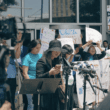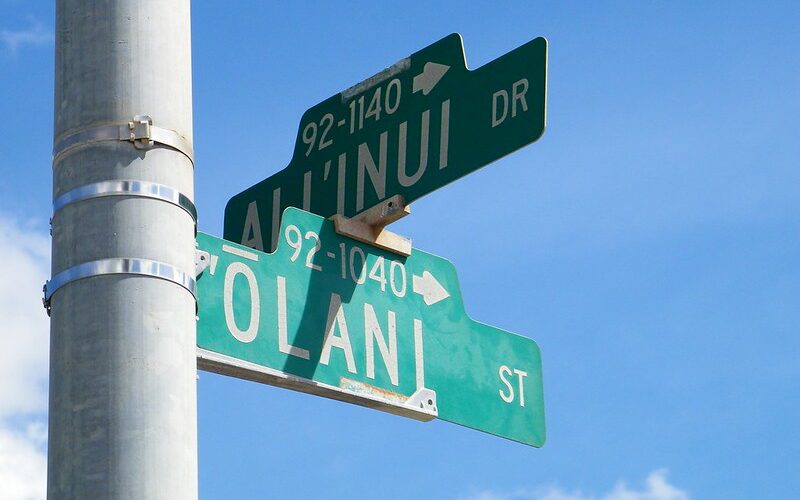Sign up here to receive The Yappie's weekly briefing on Asian American + Pacific Islander politics and support our work by making a donation.
After being forced to abandon their language and other aspects of their culture, Native Hawaiians are returning to the use of ‘Ōlelo Hawai‘i—and it’s bouncing back.
Following decades of erasure, two characters—the ‘okina and the kahakō—are playing a key role in reviving the Hawaiian language and raising questions about how it should be approached in official settings.
‘Ōlelo Hawai‘i, the Hawaiian language, originally existed in spoken form only, with missionaries producing a written medium in the 1820s in order to implement the teachings of Christianity.
Throughout the 19th century, Native Hawaiians—as with other Indigenous groups—experienced increasing suppression of their language.
For a short period from the 1840s to the 1850s, Hawai‘i was a bilingual society tolerant of English, with laws published in both languages and the U.S. Supreme Court’s recognition of Hawaiian as a legitimate language in legal proceedings. But as disputes arose over translation discrepancies and lobbyists championed the use of English, the Hawaiian legislature ruled in 1859 that English versions of the law would override versions in Hawaiian.
In the early 19th century, the U.S. also began to fund and operate boarding schools where more than 10,000 Indigenous children, including Native Hawaiians, underwent forced assimilation and cultural erasure. Sociologist David A. Swanson estimates the population of Hawai‘i in 1778—the year Europeans first arrived in Hawai‘i—to have been nearly 700,000 compared to the roughly 20,000 speakers of ‘Ōlelo Hawai‘i today.
“Language is the first aspect of a people to vanish,” activist Larry Kimura, who is largely considered the grandfather of the language’s revitalization and now serves as a faculty member at the University of Hawaii’s College of Hawaiian Language on the Hilo campus, said in an appearance on NPR’s “Code Switch” podcast in 2019.
“People don't recognize that until it's almost gone, because they're hanging onto their typical culture identification tags such as their songs, their dancing, their foods, their religion maybe, or what they wear or how they look. But language is the one that is slipping away without them noticing it. And by the time it happens, it’s in very dire straits.”
After more than a century and a half, Native Hawaiians are grappling with what it means to reconnect with their language in a colonial context as they seek to address generational trauma, while lawmakers are taking steps to counteract the language’s near-extinction.
‘Ōlelo Hawai‘i contains characters that are not available on most keyboards, resulting in inaccurate substitutions such as using an apostrophe for the ‘okina, which indicates a glottal stop, or an umlaut for the kahakō, a bar-like mark placed over a vowel to add length or emphasis.
Since 1978, when ‘Ōlelo Hawai‘i was recognized as one of Hawai‘i’s official languages, state lawmakers have made efforts to support the legitimacy of the language in a reversal of previous mandates by the U.S. and state governments. In 2022, the Hawai‘i state legislature has established that, effective July 1, 2023, “Any rule, order, policy, or other act, official or otherwise, that prohibits or discourages the use of kahakō and ‘okina or the consistent use and spelling of Hawaiian names and words, as provided by this section, shall be void.”
Some have pointed out that the use of the ‘okina and the kahakō actually benefits non-speakers who are unfamiliar with the correct pronunciations of Hawaiian words. To others, using them symbolizes a broader respect and awareness of the language they are trying to bring back.
But the use of these characters presents new challenges, leading different institutions to make varying decisions about when to include or omit them.
While the County of Kaua‘i uses special characters in its printed materials, for example, it doesn’t use them on its website, citing the inaccuracy of apostrophe and umlaut substitutes and discoverability issues.
“Searching in Google for ‘Kauai’ is not the same as searching for ‘Kauaʻi,’” a disclaimer published on the county website says. “Very few people outside the Hawaiian islands would be aware of the existence of these ‘special’ characters and would therefore have difficulty locating pages which use them.”
The Hawai‘i Department of Transportation, on the other hand, embraced the challenges and in February 2022 began a campaign to update and install highway signs with characters including the ‘okina and the kahako and welcomed feedback from the public. In December 2022, the Hawaii Department of Transportation again solicited feedback from the public on the use of the ‘okina and the kahako on street signs.
The campaign builds on the work of Kimura, who began hosting a radio show in the 1970s with native speakers of ‘Ōlelo Hawai‘i. Others, including Keiki Kawai‘ae‘a and Hawaiian couple Pelehonuamea Suganuma and Kekoa Harman, have advanced the movement by creating educational programs for young children and encouraging the use of ‘Ōlelo Hawai‘i at home.
“We really see this as a multi-year movement towards Hawaiian language and English parity,” Makanani Salā, executive director of the Honolulu Mayor’s Office of Culture and Arts, told Spectrum News. “So much of our history is held in our place names, our wahi pana, so it is important for us to assure those names are respected and utilized correctly.”









